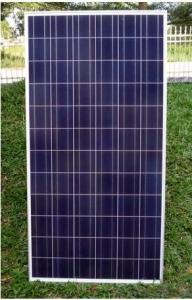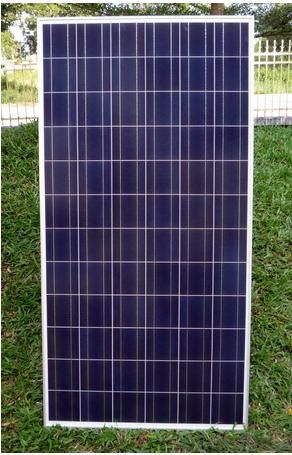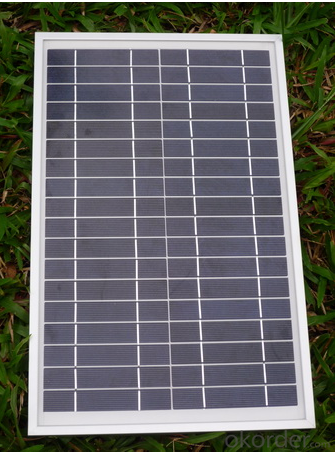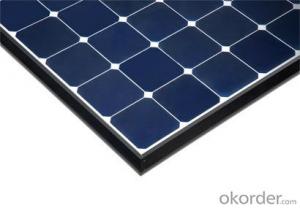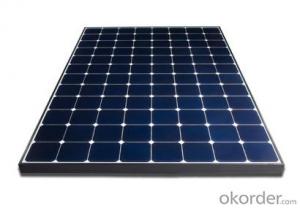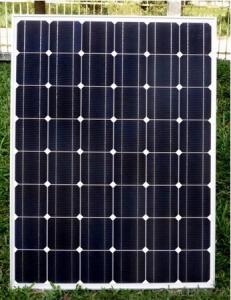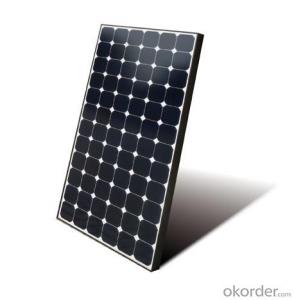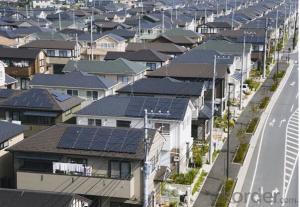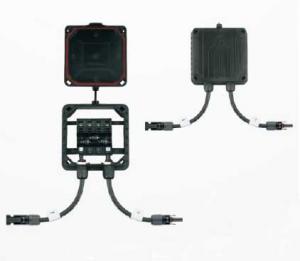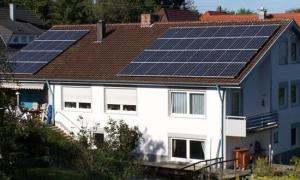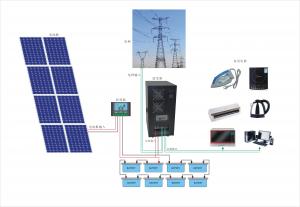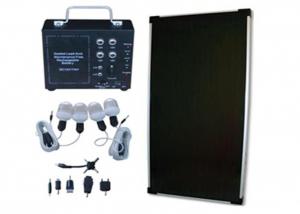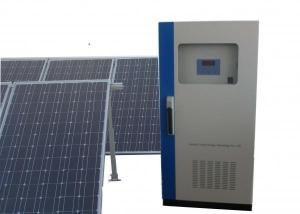Home Solar Energy Systems - CNBM On Grid System 30000W with Certificate UL, TUV, CE
- Loading Port:
- Shanghai
- Payment Terms:
- TT OR LC
- Min Order Qty:
- 50 watt
- Supply Capability:
- 1000 watt/month
OKorder Service Pledge
OKorder Financial Service
You Might Also Like
Specification
CNBM On Grid System 30000W with Certificate UL TUV CE
Product description
They range from small residential and commercial rooftop systems to large utility-scale solar power stations. Unlike stand-alone power systems, a grid-connected system rarely includes an integrated battery solution, as they are still very expensive. When conditions are right, the grid-connected PV system supplies the excess power, beyond consumption by the connected load, to the utility grid.
Connection of the photovoltaic power system can be done only through an interconnection agreement between the consumer and the utility company. The agreement details the various safety standards to be followed during the connection.[4]
A photovoltaic (in short PV) module is a packaged, connected assembly of typically 6×10 solar cells. Solar Photovoltaic panels constitute the solar array of a photovoltaic system that generates and supplies solar electricity in commercial and residential applications. Each module is rated by its DC output power under standard test conditions, and typically ranges from 100 to 365 watts. The efficiency of a module determines the area of a module given the same rated output – an 8% efficient 230 watt module will have twice the area of a 16% efficient 230 watt module. There are a few commercially available solar panels available that exceed 22% efficiency[1] and reportedly also exceeding 24%.[2][3] A single solar module can produce only a limited amount of power; most installations contain multiple modules. A photovoltaic system typically includes a panel or an array of solar modules, a solar inverter, and sometimes a battery and/or solar tracker and interconnection wiring.
The price of solar power, together with batteries for storage, has continued to fall so that in many countries it is cheaper than ordinary fossil fuel electricity from the grid (there is "grid parity").[4]
Off-the-grid is a system and lifestyle[1] designed to help people function without the support of remote infrastructure, such as an electrical grid. In electricity, off-grid can be stand-alone power system or mini-grids typically to provide a smaller community with electricity. Off-grid electrification is an approach to access electricity used in countries and areas with little access to electricity, due to scattered or distant population. The term off-the-grid (OTG) can refer to living in a self-sufficient manner without reliance on one or more public utilities. People who adopt this lifestyle are called off-gridders.[2]
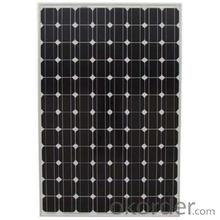
Application
Industrial
Commercial
Residential
Feature
Residential, grid-connected rooftop systems which have a capacity more than 10 kilowatts can meet the load of most consumers.[2] They can feed excess power to the grid where it is consumed by other users. The feedback is done through a meter to monitor power transferred. Photovoltaic wattage may be less than average consumption, in which case the consumer will continue to purchase grid energy, but a lesser amount than previously. If photovoltaic wattage substantially exceeds average consumption, the energy produced by the panels will be much in excess of the demand. In this case, the excess power can yield revenue by selling it to the grid. Depending on their agreement with their local grid energy company, the consumer only needs to pay the cost of electricity consumed less the value of electricity generated. This will be a negative number if more electricity is generated than consumed.[3] Additionally, in some cases, cash incentives are paid from the grid operator to the consumer.
Packaging
With carton and box
- Q: How much maintenance do solar energy systems require?
- Solar energy systems require minimal maintenance. The panels are designed to be durable and can last for decades with little to no maintenance. Occasionally cleaning the panels to remove dirt and debris is recommended, and checking the system's performance periodically is also advised. Overall, solar energy systems require very little ongoing maintenance.
- Q: What is the impact of dust and dirt on the performance of solar panels?
- Dust and dirt can significantly impact the performance of solar panels. When accumulated on the surface of the panels, they can reduce the amount of sunlight reaching the photovoltaic cells, thereby decreasing the overall energy production. Dust and dirt particles can also create shading, which further reduces the panel's efficiency. Regular cleaning and maintenance are necessary to ensure optimal performance and maximize the energy output of solar panels.
- Q: Can solar energy systems be used in powering research laboratories or scientific facilities?
- Yes, solar energy systems can be used to power research laboratories or scientific facilities. Solar panels can be installed on the roofs or grounds of these facilities to convert sunlight into electricity. This renewable energy source can provide a sustainable and reliable power supply, reducing dependence on traditional electricity grids and minimizing the carbon footprint of these facilities. Additionally, solar energy systems can be integrated with battery storage solutions to ensure continuous power supply even during periods of low sunlight or power outages.
- Q: Can solar energy systems be used for heating and cooling buildings?
- Yes, solar energy systems can indeed be used for heating and cooling buildings. Solar energy systems, such as solar thermal systems and photovoltaic (PV) systems, can be utilized to provide both heating and cooling solutions for buildings. Solar thermal systems capture the heat from the sun and convert it into usable thermal energy. This energy can then be used for space heating, water heating, and even for cooling purposes. In a solar thermal heating system, solar collectors are installed on the roof or façade of a building to capture the sun's heat. This heat is then transferred to a heat exchanger or a heat storage system, which can be used to heat the building during colder periods. Similarly, solar thermal cooling systems use the sun's heat to power absorption chillers or desiccant cooling systems. These systems use the heat energy to drive a refrigeration cycle, which can cool the air inside a building. Solar thermal cooling systems are particularly effective in hot climates where cooling demands are high, as they can reduce the reliance on traditional air conditioning systems. Furthermore, PV systems can also contribute to the heating and cooling of buildings indirectly. By generating electricity from sunlight, PV systems can power electric heating or cooling devices, such as heat pumps and air conditioners. While PV systems are primarily known for their ability to generate electricity, this electricity can be used to operate heating and cooling systems, thereby reducing the need for fossil fuel-based heating or cooling methods. In conclusion, solar energy systems can be utilized for both heating and cooling purposes in buildings. Whether through solar thermal systems directly capturing the sun's heat or through PV systems indirectly powering heating and cooling devices, solar energy can provide sustainable and environmentally friendly solutions for heating and cooling buildings.
- Q: Can solar energy systems be used in areas with strict building codes or homeowner association restrictions?
- Yes, solar energy systems can be used in areas with strict building codes or homeowner association restrictions. However, it may require careful planning and adherence to specific guidelines. In such cases, homeowners or developers would need to work closely with relevant authorities to ensure compliance with regulations while incorporating solar energy systems into the building design.
- Q: Can solar energy systems be used in areas with high levels of hail or other severe weather conditions?
- Yes, solar energy systems can be used in areas with high levels of hail or other severe weather conditions. However, it is important to select appropriate materials and design the system to withstand these conditions. For instance, using hail-resistant panels, positioning them at an angle, and employing protective measures can help mitigate the potential damage caused by hail or severe weather. Proper maintenance and insurance coverage are also advisable to ensure the longevity and efficiency of the solar energy system in such areas.
- Q: Can a solar energy system be installed on a building with a metal roof?
- Certainly! It is possible to install a solar energy system on a building that has a metal roof. In fact, metal roofs are often regarded as an excellent choice for solar installations due to their long-lasting nature and durability. Compared to other roofing materials, installing solar panels on a metal roof is usually simpler and more cost-effective. Metal roofs offer a stable foundation for mounting the solar panels and can withstand the weight and various weather conditions associated with solar installations. Moreover, metal roofs tend to be more reflective, which can enhance the efficiency of the solar panels by reducing heat absorption. All in all, a metal roof proves to be an excellent option for the installation of a solar energy system on a building.
- Q: Can a solar energy system be installed in an off-grid location?
- Certainly! Solar energy systems can be installed in off-grid locations. Off-grid locations are actually perfect for solar energy systems because they often don't have access to traditional sources of electricity. In off-grid solar energy systems, there are solar panels, batteries, charge controllers, and inverters. The solar panels gather sunlight and convert it into electricity, which is then stored in batteries for use when there is no sunlight. The charge controller manages the flow of electricity between the solar panels and the batteries, and the inverter changes the stored DC electricity into AC electricity to power appliances and devices. All these components work together to offer a dependable and sustainable electricity source in off-grid locations, reducing reliance on fossil fuels and minimizing environmental impact.
- Q: Can solar energy systems be used in extreme weather conditions?
- Yes, solar energy systems can be used in extreme weather conditions. However, their efficiency may be affected to some extent depending on the severity of the weather.
- Q: Can solar energy systems be used in remote areas without access to the electricity grid?
- Yes, solar energy systems can be used in remote areas without access to the electricity grid. Solar power systems, such as solar panels and batteries, can be installed in these areas to harness sunlight and convert it into electricity. This allows remote communities to have a reliable and sustainable source of power, improving their quality of life and reducing their dependence on traditional energy sources.
Send your message to us
Home Solar Energy Systems - CNBM On Grid System 30000W with Certificate UL, TUV, CE
- Loading Port:
- Shanghai
- Payment Terms:
- TT OR LC
- Min Order Qty:
- 50 watt
- Supply Capability:
- 1000 watt/month
OKorder Service Pledge
OKorder Financial Service
Similar products
Hot products
Hot Searches
Related keywords
